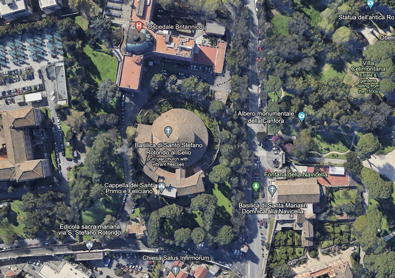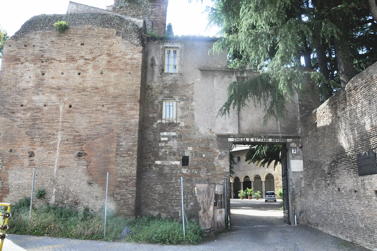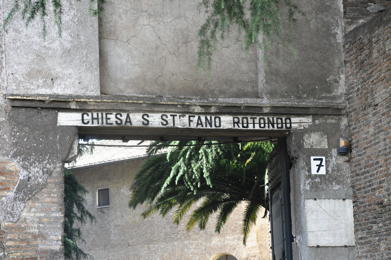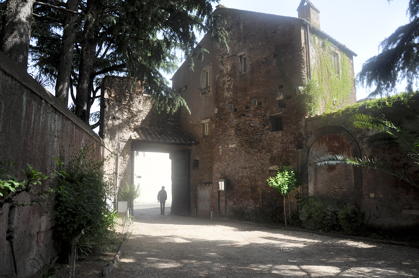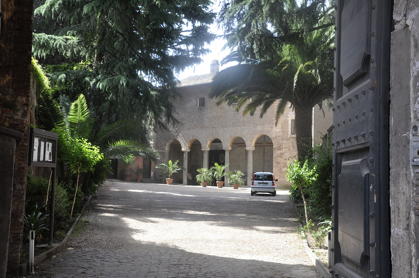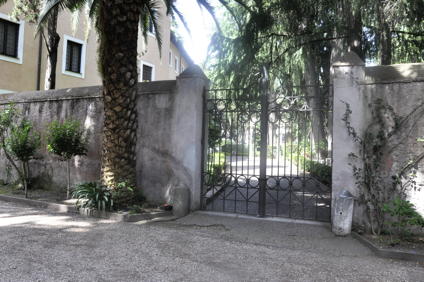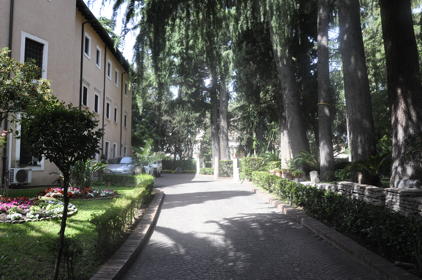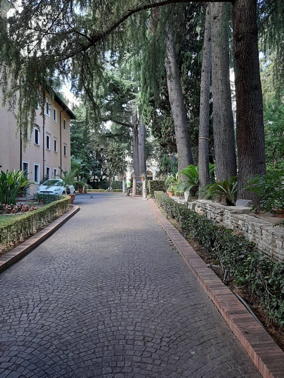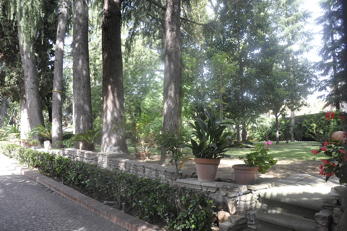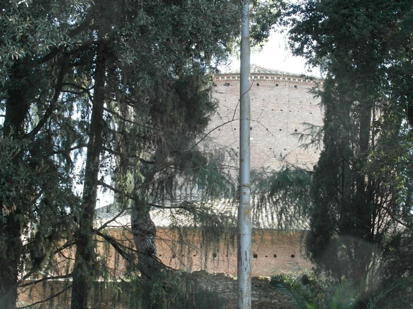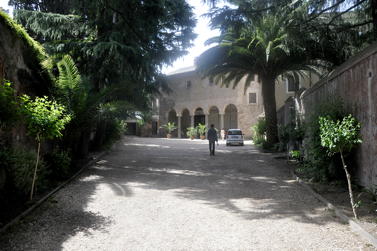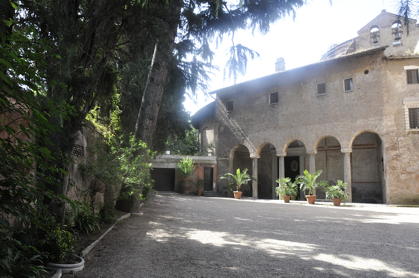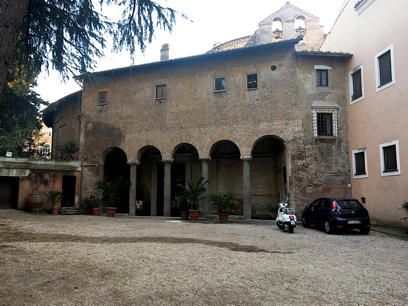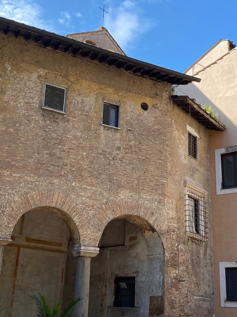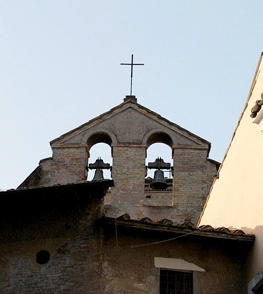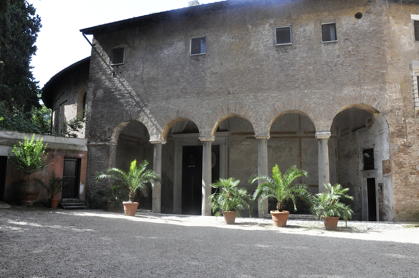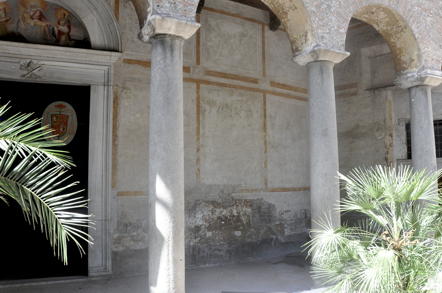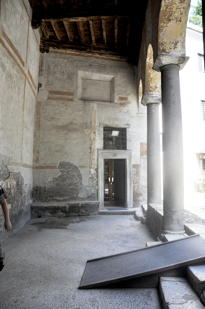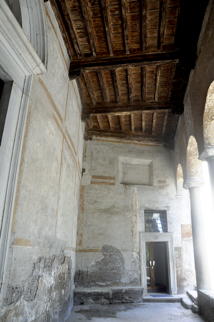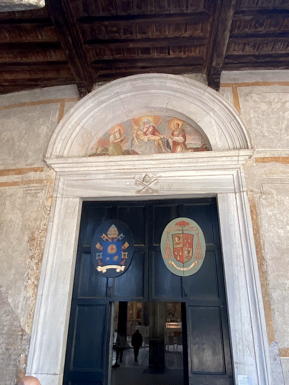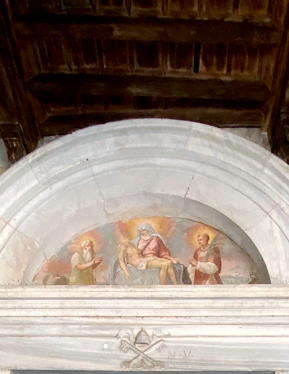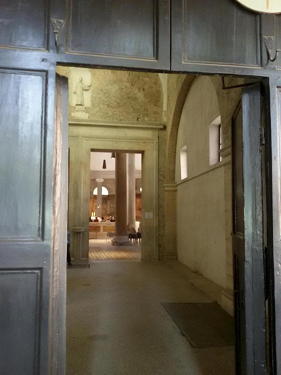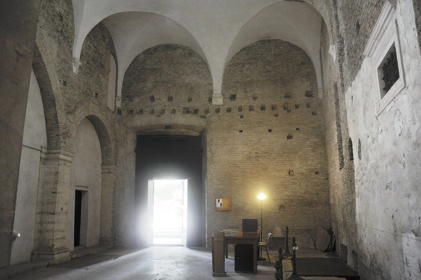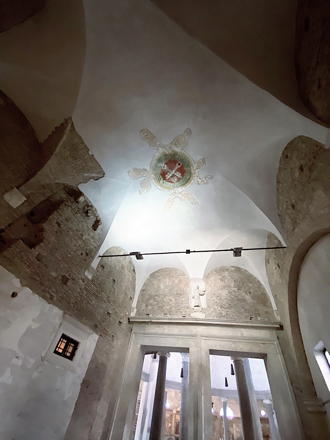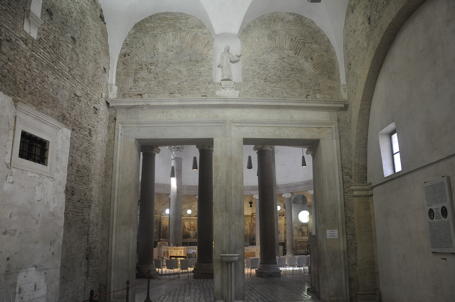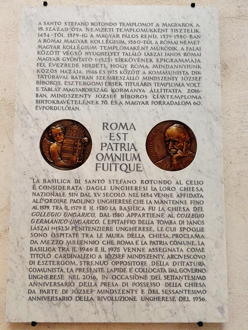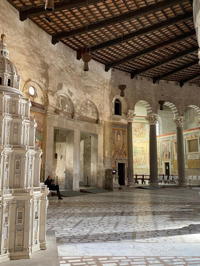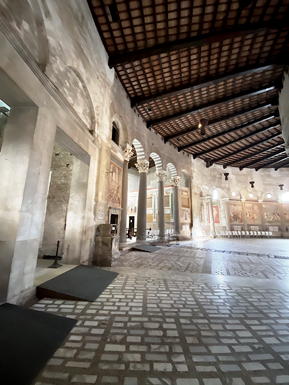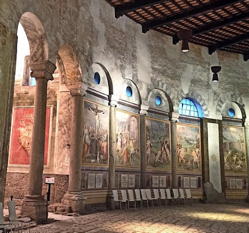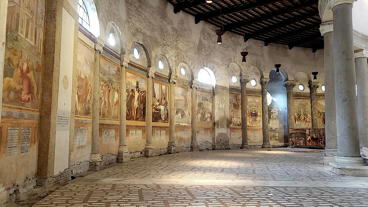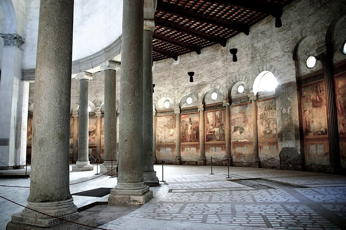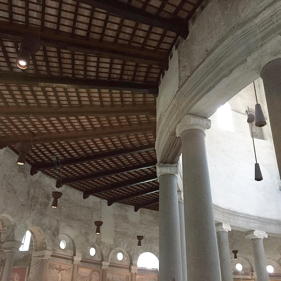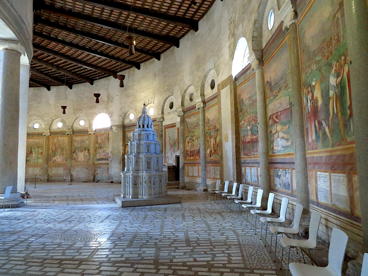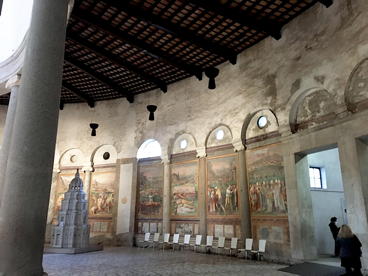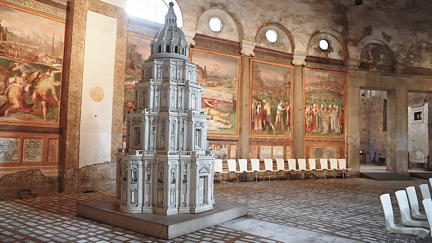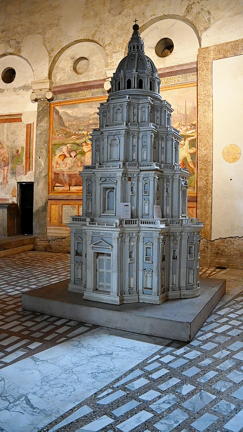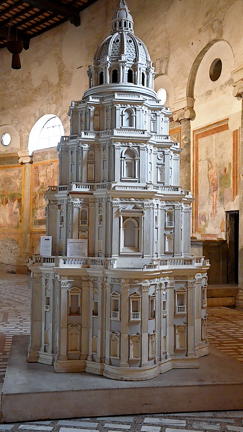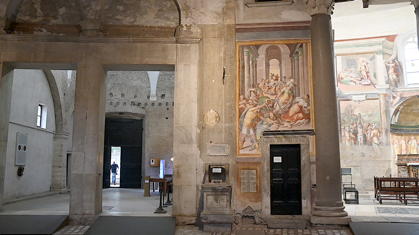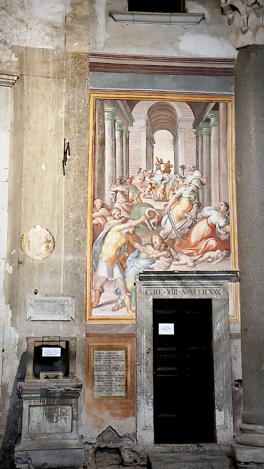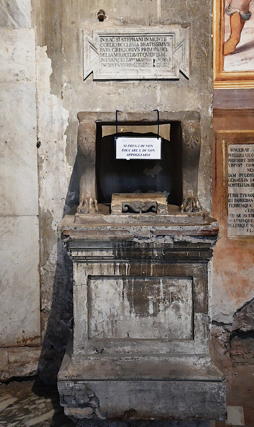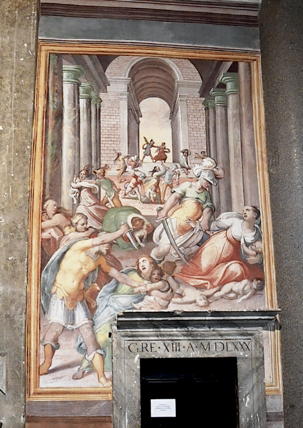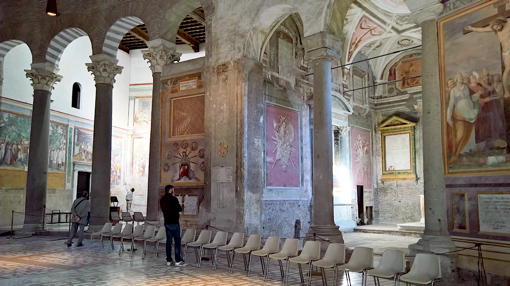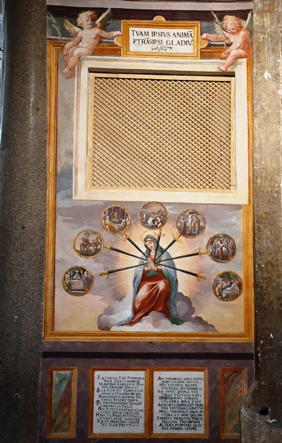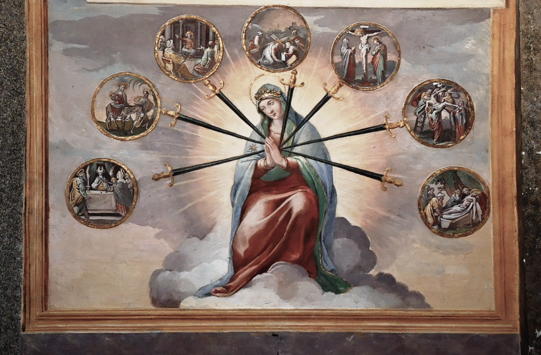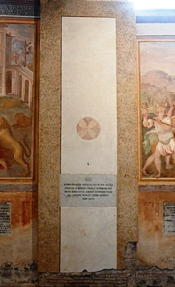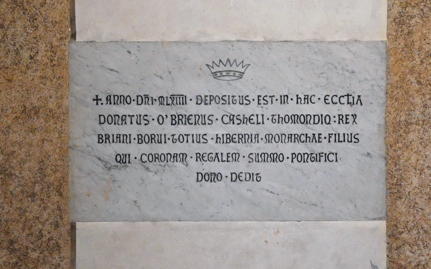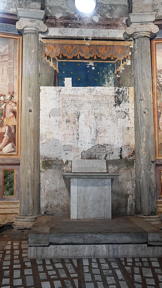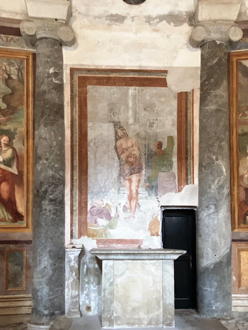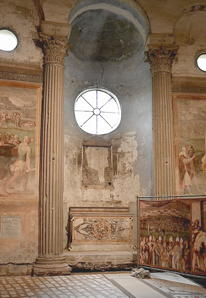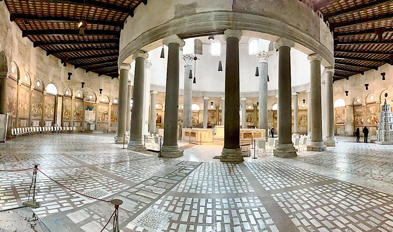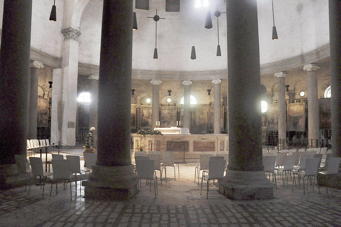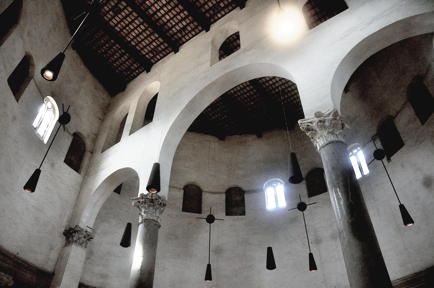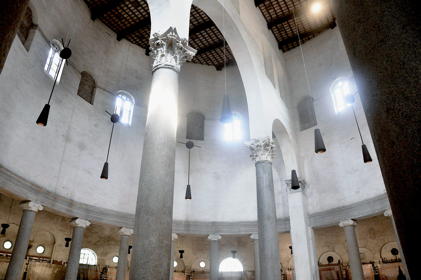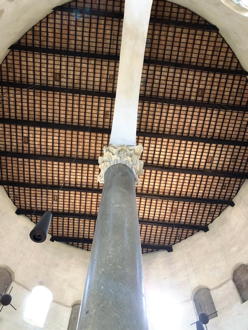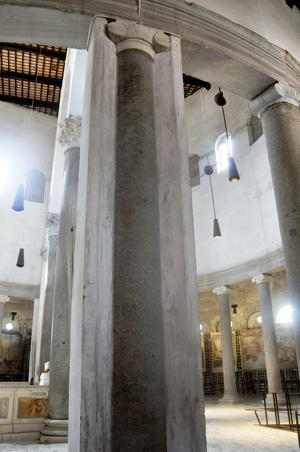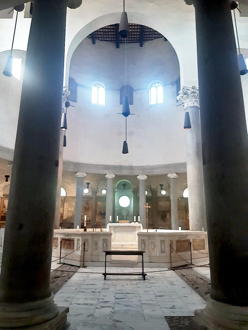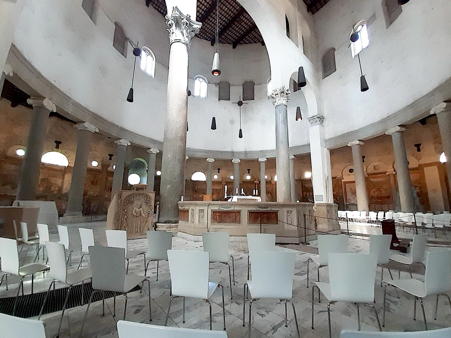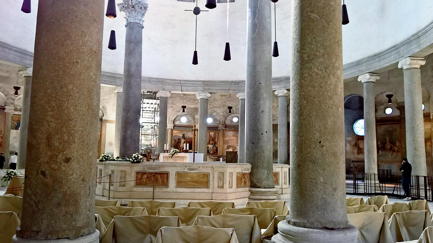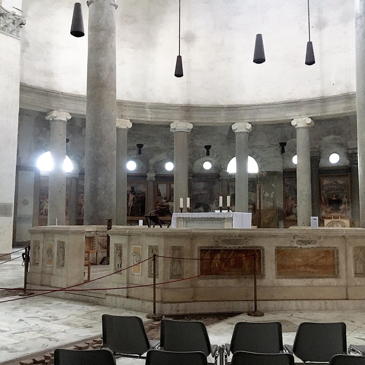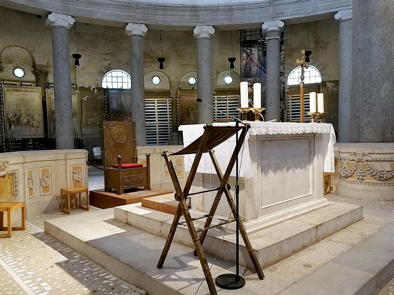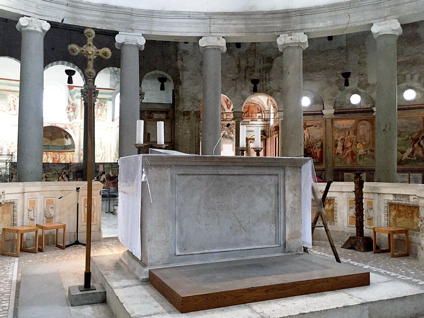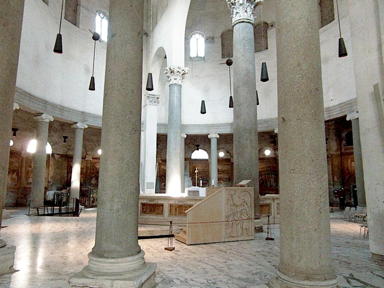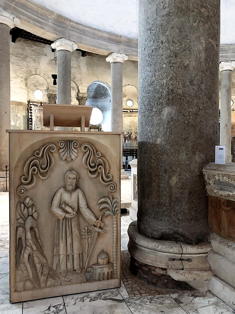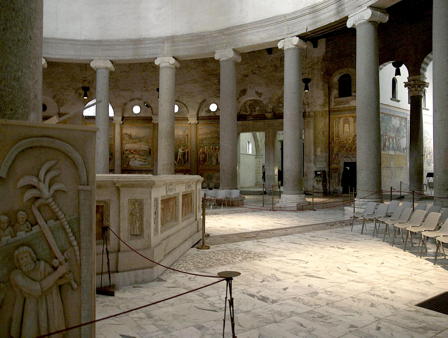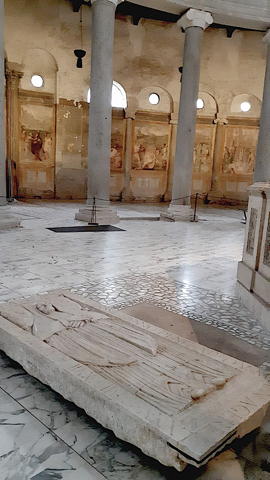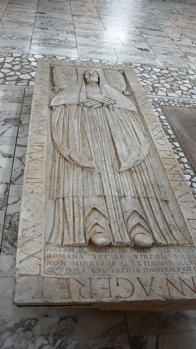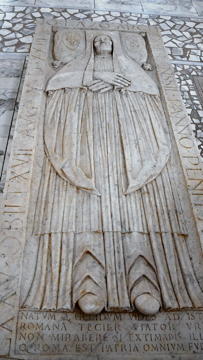Santo Stefano Rotondo al Celio is the 5th century Hungarian national church, which is titular and has the status of a minor basilica. It is located on the summit of the Caelian Hill in the rione Monti (I). The primary dedication is to
St Stephen the Deacon, but there is an apparently informal secondary dedication to
St Stephen of Hungary. Santo Stefano Rotondo is the station church for Friday of the 5th week of Lent.
For reference, a plan of the church is available
here.
The first church was considered to have been consecrated in the time of Pope St Simplicius (468-483) to hold the relics of St Stephen, deacon and protomartyr of the Church. In the foundations were found two coins of the emperor Libius Severus (461-5), indicating the start of actual construction in the early 460's. The documentary evidence for the church's foundation is very poor, and we don't know why it had such a strange plan. It was the first circular church in Rome, and so it has been thought that it was modelled on the Anastasis of the Holy Sepulchre in Jerusalem.
In the mid 7th century Pope Theodore I (642-9), from Jerusalem and probably a Greek, fitted out the north-eastern cross arm as a shrine-chapel for the martyrs SS Primus and Felician. He commissioned a mosaic, which survives, and buried his father here. He had been a bishop in the Holy Land.
In the 9th century the plundering began, to which was added, in 847, the damage caused by an earthquake and in 1084 that caused by the Sack of Rome by the troops of Robert Guiscard.
Between 1139 and 1143 Pope Innocent II (1130-1143) had the church restored, but the external annular nave, left roofless, was no longer rebuilt and finally fell into ruin. Of the four arms of the cross, only the one containing the chapel of Saints Primo and Feliciano remained intact. The median colonnade was closed with bricks and became the external wall; a vaulted atrium was added in front of the entrance from Via del Laterano. For the central drum part, to support the roof, a transversal wall was erected high along a diameter with unequal arches supported by two other added granite columns.
A major restoration was ordered by Pope Nicholas V in 1453. The work was carried out by the architect
Bernardo Rosselino, who redid the roofs and the floor, raising the level, placed a marble altar in the center of the building and blocked the columns of the second ring with a wall of a robust masonry cylinder corresponding to the current external wall of the building.
In the following year, the church and monastery was granted to the Order of St Paul the First Hermit, also known as the Pauline Fathers. This monastic congregation was founded in Hungary in 1250,
During the terrible sacking of Rome in 1527, both the Church and the Monastery suffered great damage.
In 1579 Pope Gregory XIII granted the complex to Hungarian Jesuits for a seminary to train priests for Hungary.
In 1582
Niccolò Circignani, known as Pomarancio, received the task of decorating the walls of the church which closed the ambulatory with a cycle of 32 wall paintings, showing the suffering of martyrs in graphic detail.
There was another restoration in 1802 but, yet again, the church fell into disrepair as the 19th century progressed. The blocking of the outer arcade was not damp-proof, the problem being accentuated by the old bricks being slightly porous. The inevitable result of this was that the frescoes peeled off the wall in places, and were hence re-painted here and there. The problem with damp became very bad in the mid 20th century, and in 1958 a long-term program of restoration was announced. The opportunity was taken to perform archaeological excavations under the church, and in 1973 a Mithraeum was discovered.
The little monastery attached to the church is now the Generalate of the Suore Missionarie del Sacro Costato.
